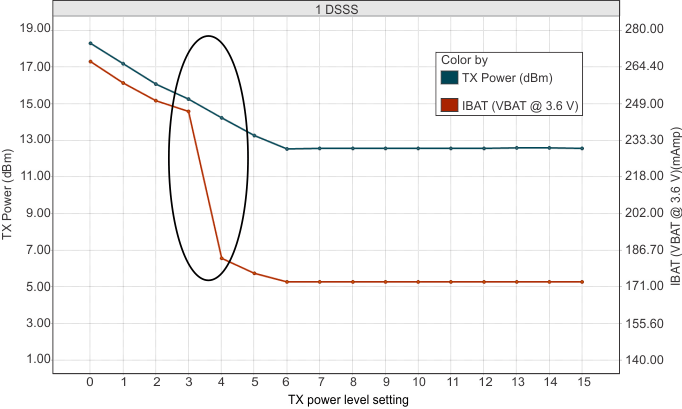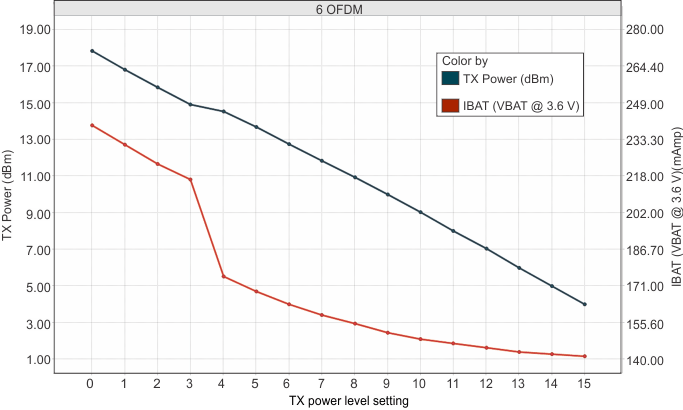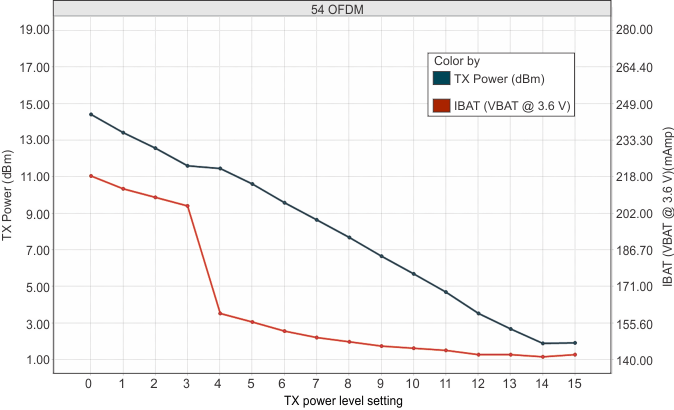JAJSIK6C February 2020 – December 2024 CC3235MODAS , CC3235MODASF , CC3235MODS , CC3235MODSF
PRODUCTION DATA
- 1
- 1 特長
- 2 アプリケーション
- 3 概要
- 4 機能ブロック図
- 5 Device Comparison
- 6 Pin Configuration and Functions
-
7 Specifications
- 7.1 Absolute Maximum Ratings
- 7.2 ESD Ratings
- 7.3 Recommended Operating Conditions
- 7.4 Current Consumption (CC3235MODS and CC3235MODAS)
- 7.5 Current Consumption (CC3235MODSF and CC3235MODASF)
- 7.6 TX Power Control for 2.4 GHz Band
- 7.7 TX Power Control for 5 GHz
- 7.8 Brownout and Blackout Conditions
- 7.9 Electrical Characteristics for GPIO Pins
- 7.10 CC3235MODAx Antenna Characteristics
- 7.11 WLAN Receiver Characteristics
- 7.12 WLAN Transmitter Characteristics
- 7.13 BLE and WLAN Coexistence Requirements
- 7.14 Reset Requirement
- 7.15 Thermal Resistance Characteristics for MOB and MON Packages
- 7.16
Timing and Switching Characteristics
- 7.16.1 Power-Up Sequencing
- 7.16.2 Power-Down Sequencing
- 7.16.3 Device Reset
- 7.16.4 Wake Up From Hibernate Timing
- 7.16.5 Peripherals Timing
-
8 Detailed Description
- 8.1 Overview
- 8.2 Functional Block Diagram
- 8.3 Arm Cortex-M4 Processor Core Subsystem
- 8.4 Wi-Fi Network Processor Subsystem
- 8.5 Security
- 8.6 FIPS 140-2 Level 1 Certification
- 8.7 Power-Management Subsystem
- 8.8 Low-Power Operating Mode
- 8.9 Memory
- 8.10 Restoring Factory Default Configuration
- 8.11 Boot Modes
- 8.12 Hostless Mode
- 8.13 Device Certification and Qualification
- 8.14 Module Markings
- 8.15 End Product Labeling
- 8.16 Manual Information to the End User
- 9 Applications, Implementation, and Layout
- 10Environmental Requirements and SMT Specifications
- 11Device and Documentation Support
- 12Revision History
- 13Mechanical, Packaging, and Orderable Information
パッケージ・オプション
デバイスごとのパッケージ図は、PDF版データシートをご参照ください。
メカニカル・データ(パッケージ|ピン)
- MON|63
サーマルパッド・メカニカル・データ
発注情報
7.6 TX Power Control for 2.4 GHz Band
The CC3235MODS and CC3235MODAS has several options for modifying the output power of the device when required. For the 2.4 GHz band it is possible to lower the overall output power at a global level using the global TX power level setting. In addition, the 2.4 GHz band allows the user to enter additional back-offs (2), per channel, region (3)and modulation rates (4)(5), through Image creator (see the Uniflash with Image Creator User Guide for more details).
Figure 7-1, Figure 7-2, and Figure 7-3 show TX power and IBAT versus TX power level settings for the CC3235MODS module at modulations of 1 DSSS, 6 OFDM, and 54 OFDM, respectively. For the CC3235MODSF module, the IBAT current has an increase of approximately 10 mA to 15 mA depending on the transmitted rate. The TX power level remains the same.4
In Figure 7-1, the area enclosed in the circle represents a significant reduction in current during transition from TX power level 3 to level 4. In the case of lower range requirements (14-dBm output power), TI recommends using TX power level 4 to reduce the current.
 Figure 7-1 TX Power and IBAT vs TX Power Level Settings (1 DSSS)
Figure 7-1 TX Power and IBAT vs TX Power Level Settings (1 DSSS) Figure 7-2 TX Power and IBAT vs TX Power Level Settings (6 OFDM)
Figure 7-2 TX Power and IBAT vs TX Power Level Settings (6 OFDM)
 Figure 7-3 TX Power and IBAT vs TX Power Level Settings (54 OFDM)
Figure 7-3 TX Power and IBAT vs TX Power Level Settings (54 OFDM)